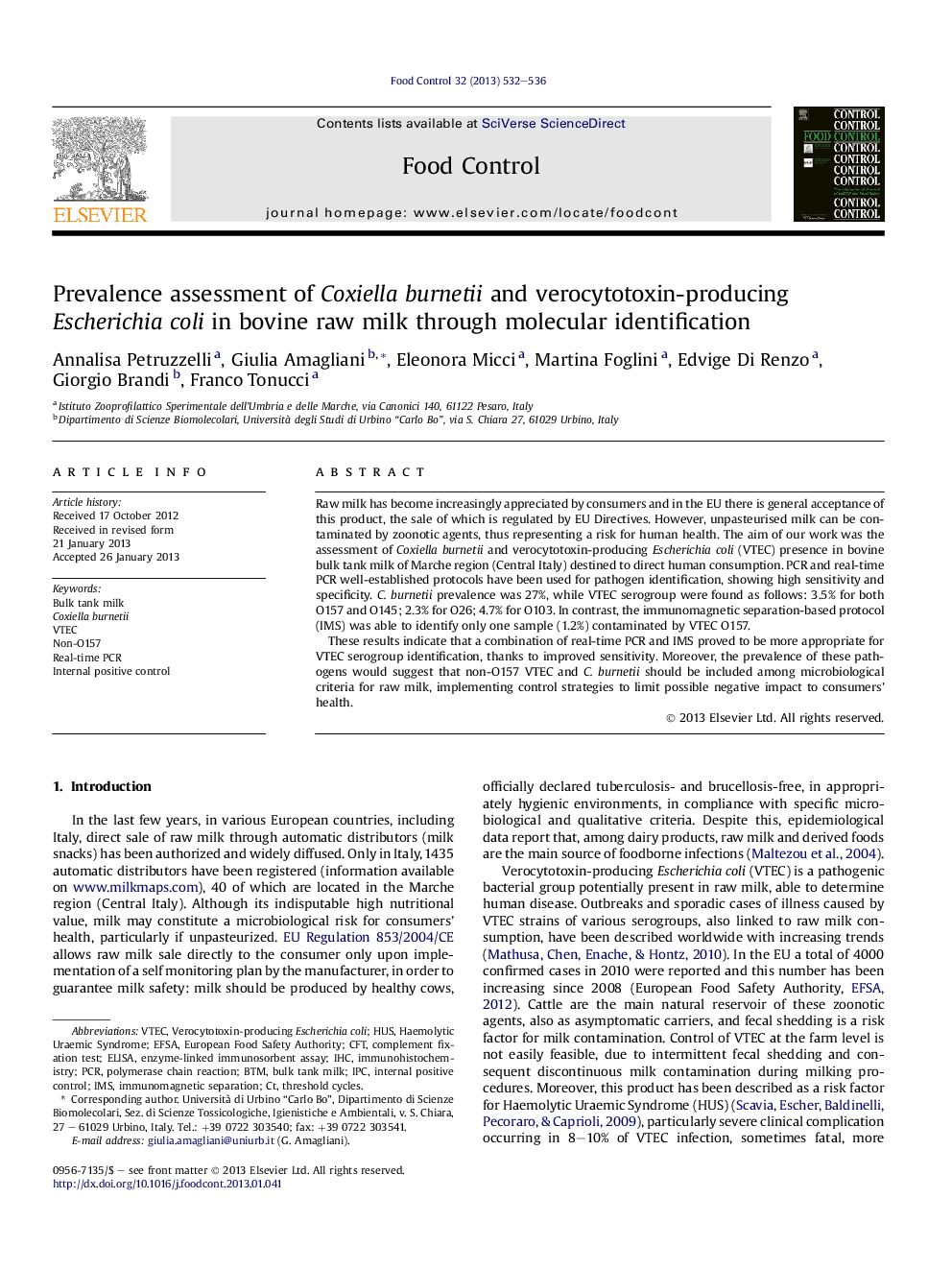| Article ID | Journal | Published Year | Pages | File Type |
|---|---|---|---|---|
| 4559399 | Food Control | 2013 | 5 Pages |
Raw milk has become increasingly appreciated by consumers and in the EU there is general acceptance of this product, the sale of which is regulated by EU Directives. However, unpasteurised milk can be contaminated by zoonotic agents, thus representing a risk for human health. The aim of our work was the assessment of Coxiella burnetii and verocytotoxin-producing Escherichia coli (VTEC) presence in bovine bulk tank milk of Marche region (Central Italy) destined to direct human consumption. PCR and real-time PCR well-established protocols have been used for pathogen identification, showing high sensitivity and specificity. C. burnetii prevalence was 27%, while VTEC serogroup were found as follows: 3.5% for both O157 and O145; 2.3% for O26; 4.7% for O103. In contrast, the immunomagnetic separation-based protocol (IMS) was able to identify only one sample (1.2%) contaminated by VTEC O157.These results indicate that a combination of real-time PCR and IMS proved to be more appropriate for VTEC serogroup identification, thanks to improved sensitivity. Moreover, the prevalence of these pathogens would suggest that non-O157 VTEC and C. burnetii should be included among microbiological criteria for raw milk, implementing control strategies to limit possible negative impact to consumers' health.
► Prevalence data about VTEC serogroups and Coxiella burnetii in raw milk were obtained by molecular methods. ► C. burnetii and VTEC, found in raw milk for direct human consumption, are a potential risk for consumers. ► BTM analysis is a useful epidemiologic tool for the monitoring of pathogen diffusion in milk farms. ► Non-O157 VTEC and C. burnetii should be included among microbiological criteria for raw milk. ► Information obtained will be helpful in planning control strategies with broad applicability.
